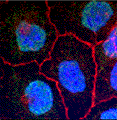Biochemistry, Department of
Document Type
Article
Date of this Version
11-17-2020
Citation
Proceedings of the National Academy of Sciences Mar 2021, 118 (12) e2022982118; DOI: 10.1073/pnas.2022982118
Abstract
Virtually all land plants are coated in a cuticle, a waxy polyester that prevents nonstomatal water loss and is important for heat and drought tolerance. Here, we describe a likely genetic basis for a divergence in cuticular wax chemistry between Sorghum bicolor, a drought tolerant crop widely cultivated in hot climates, and its close relative Zea mays (maize). Combining chemical analyses, heterologous expression, and comparative genomics, we reveal that: 1) sorghum and maize leaf waxes are similar at the juvenile stage but, after the juvenile-to-adult transition, sorghum leaf waxes are rich in triterpenoids that are absent from maize; 2) biosynthesis of the majority of sorghum leaf triterpenoids is mediated by a gene that maize and sorghum both inherited from a common ancestor but that is only functionally maintained in sorghum; and 3) sorghum leaf triterpenoids accumulate in a spatial pattern that was previously shown to strengthen the cuticle and decrease water loss at high temperatures. These findings uncover the possibility for resurrection of a cuticular triterpenoid-synthesizing gene in maize that could create a more heat-tolerant water barrier on the plant’s leaf surfaces. They also provide a fundamental understanding of sorghum leaf waxes that will inform efforts to divert surface carbon to intracellular storage for bioenergy and bioproduct innovations
Included in
Biochemistry Commons, Biotechnology Commons, Other Biochemistry, Biophysics, and Structural Biology Commons



Comments
CC-BY-NC-ND